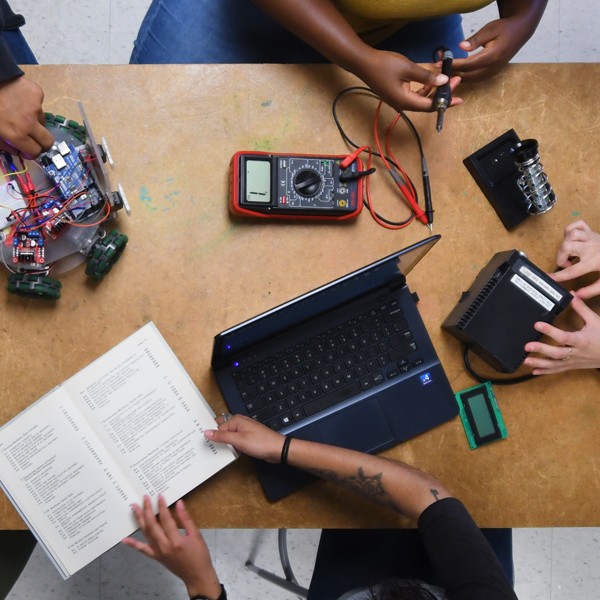Research
 Constructed
an alt-az servo-encoder drive system for a Dobsonian telescope, and
built a simplified version of a control system for students to get their
hands on experience.
Constructed
an alt-az servo-encoder drive system for a Dobsonian telescope, and
built a simplified version of a control system for students to get their
hands on experience.
 Implemented
parallel algorithms for fault-tolerant decentralized signal processing
for the SPACE test-bed.
Implemented
parallel algorithms for fault-tolerant decentralized signal processing
for the SPACE test-bed.
Develop an autonomous astronomical image viewer and analyzer for FITS
astronomical image files.
 Develop
an autonomous object detection algorithm to facilitate the analysis of
the First Look Survey. Research is currently conducted to improve the
accuracy of object detection when clouds are present in the image.
Develop
an autonomous object detection algorithm to facilitate the analysis of
the First Look Survey. Research is currently conducted to improve the
accuracy of object detection when clouds are present in the image.
 Verification
of the autonomous object detection is being conducted based on the joint
efforts of students in Electrical Engineering and Physical Science.
Verification
of the autonomous object detection is being conducted based on the joint
efforts of students in Electrical Engineering and Physical Science.
 A
user-friendly software tool with graphical user interface is being
developed to integrate the functions of the FITS image viewer, analyzer,
and autonomous object detection.
A
user-friendly software tool with graphical user interface is being
developed to integrate the functions of the FITS image viewer, analyzer,
and autonomous object detection.ADD ANNE SULLIVAN'S RESEARCH HERE
Research conducted by using the neural network technologies as the
Frequency and Timing Subsystem (FTS) forecaster of the NASA Deep Space
Network (DSN).
 Ph.
D. research: Yulu Chen, transferred from CSULA is being prepared in the
astronomical engineering at USC. The literature research include the
topics of
Ph.
D. research: Yulu Chen, transferred from CSULA is being prepared in the
astronomical engineering at USC. The literature research include the
topics of
–Space
power systems and to evaluate possible applications of space nuclear power
generators.
–The
lunar environment, lunar base construction, and inflatable habitats.
–Micrometeoroid
and debris shielding, health-monitoring systems, and survivability.
– “Spacecraft
System Design” and participated in Space Exploration Architectures Concept
Synthesis Studio at the University of Southern California.
 A
virtual space environment is being developed using 3-D animation
technology to assist users in learning, analyzing and designing space
mission, orbital mechanics, and orbital maneuvers.
A
virtual space environment is being developed using 3-D animation
technology to assist users in learning, analyzing and designing space
mission, orbital mechanics, and orbital maneuvers.
 Two
research reports regarding space power systems and lunar habitats were
prepared for delivering the literature research at USC to the SERENADES
Laboratory.
Two
research reports regarding space power systems and lunar habitats were
prepared for delivering the literature research at USC to the SERENADES
Laboratory.
 Health-monitoring
and self-repairing systems for spacecrafts and space habitats were
identified as a potential future research interest that needs further
investigation.
Health-monitoring
and self-repairing systems for spacecrafts and space habitats were
identified as a potential future research interest that needs further
investigation.
 A
presentation focusing on self-repairing system for inflatable space
habitats was made in the USC class, Space Exploration Architectures
Concept Synthesis Studio.
A
presentation focusing on self-repairing system for inflatable space
habitats was made in the USC class, Space Exploration Architectures
Concept Synthesis Studio.
 A
three-dimensional animation software architecture model for implementing a
virtual space environment to be implemented has been defined.
A
three-dimensional animation software architecture model for implementing a
virtual space environment to be implemented has been defined.

